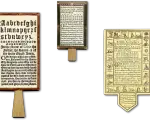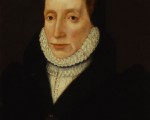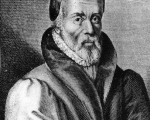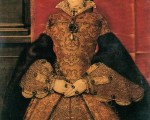
In today’s Claire Chats, I talk about how children were taught to read in the medieval and Tudor periods.
[Read More...]
In today’s Claire Chats, I talk about how children were taught to read in the medieval and Tudor periods.
[Read More...]
Lady Margaret Douglas, Countess of Lennox, was born on 8th October 1515. Margaret was the daughter of Margaret Tudor, Queen Dowager of Scotland and sister of Henry VIII, and Archibald Douglas, 6th Earl of Angus. She was born at Harbottle Castle in Northumberland, home of Thomas, 2nd Lord Dacre, because her mother went into labour as she fled Scotland to go to Henry VIII’s court in London. Margaret was baptised on 9th October, but her mother was ill after the birth and wasn’t well enough to travel onward to London until spring 1516. Mother and baby stayed in England until June 1517, when Henry VIII sent his sister and niece back to Scotland.
[Read More...]
As today is the anniversary of the execution of reformer, scholar and Bible translator, William Tyndale, Sarah Bryson has written an article on this fascinating man.
William Tyndale was born in Gloucestershire in 1494 to parents who worked in the cloth trade. Tyndale was born into a Catholic dominated England under the rule of Henry VII. He was brought up a strict and devout Catholic being taught the importance of mass and good works which would help him gain access to heaven. He would have participated in regular confession and penance and his daily life would have been dominated by Saints’ days and following the Catholic faith. The Bible that Tyndale would have known growing up would have been written in Latin, the holy language. Meanwhile the common people would have spoken English, a rough language which was not considered suitable for the holiness of the Church.
[Read More...]
A documentary on reformer, scholar and Bible translator, William Tyndale, who was executed on 6th October 1536.
[Read More...]
On Wednesday 4th October 1536, there was trouble in Horncastle, Lincolnshire. This was part of what we know as the Lincolnshire Rising which, in turn, was part of the Pilgrimage of Grace rebellion.
Dr Raynes, the chancellor of the Bishop of Lincoln, who was staying nearby at Bolingbroke, after having held a session of the commissionary’s court there, was dragged from his sickbed and taken to Horncastle. Francis Aidan Gasquet, the 19th century Benedictine monk and historical scholar, describes what happened next in his book “Henry VIII and the English Monasteries”:
[Read More...]
How much do you know about 15th and 16th century explorers and navigators? Test your knowledge with this fun quiz.
[Read More...]
Here’s this month’s expert talk, a wonderful description of the times just before the battle of Bosworth, when the houses of Lancaster and York were both trying to win the support of Rhys ap Thomas and Wales.
Susan Fern, author of “The Man Who Killed Richard III: Rhys ap Thomas” takes us step by step through these turbulent times and helps us to understand who Rhys was, and why he was to change the course of history.
This is PART ONE of a two part talk recorded exclusively for the Tudor Society. Susan will be joining us live in the chatroom on 14th October, 10pm UK time.
[Read More...]
In today’s Claire Chats I give an overview of education in the medieval and Tudor eras – what age it began, what it was like for boys and girls, who they were taught by, Tudor schools etc. I do hope you find it useful.
[Read More...]
On Sunday 1st October 1553, Mary I was crowned queen at Westminster Abbey by Stephen Gardiner, Bishop of Winchester. She was the first crowned queen regnant of England.
Here is a primary source account of the coronation ceremony from The chronicle of Queen Jane, and of two years of Queen Mary, and especially of the rebellion of Sir Thomas Wyat
[Read More...]